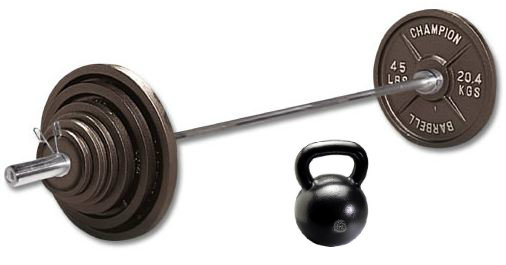Muscular strength is the ability of a muscle or muscle group to exert force to overcome the most resistance in one effort. Strength can be measured based on the amount of weight lifted. Upper-body and lower-body strength are measured separately.
- The one-repetition maximum (1RM) test is often considered as the ‘gold standard’ for assessing the strength capacity of individuals in non-laboratory environments
- It is simply defined as the maximal weight an individual can lift for only one repetition with correct technique.
Purpose of test:
To determine the maximum weight that can be li!ed for one complete repetition of the movement (Heyward, 2010).
Equipment required:
• Weights dependent on muscle group testing.
Test procedure:
The following represents the basic steps in 1-RM (or any multiple RM) testing following familiarization/practice sessions:
1.The subject should warm up, completing a number of submaximal repetitions.
2.Determine the 1-RM (or any multiple RM) within four trials with rest periods of 3 to 5 minutes between trials.
3.Select an initial weight that is within the subject’s perceived capacity (~50%–70% of capacity).
4.Resistance is progressively increased by 2.5 kg to 20 kg until the subject cannot complete the selected repetition(s). All repetitions should be performed at the same speed of movement and range of motion to instil consistency between trials.
5.The final weight li!ed successfully is recorded as the absolute 1-R or multiple RM.’
(American College of Sports Medicine [ACSM], 2006).
- 1RM bilateral back squat
- 1RM unilateral back squat
- 1RM machine leg press
- 1RM bench press
Purpose of test:
To evaluate muscular strength (American College of Sports Medicine [ACSM], 2006).
Equipment required:
• Weights, dependent on exercise to be examined
Test procedure:
The following represents the basic steps in 1-RM (or any multiple RM) testing following familiarization /practice sessions:
1.The client should warm up, completing a number of submaximal repetitions.
2.Determine the 1-RM (or any multiple RM) within four trials, with rest periods of 3 to 5 minutes between trials.
3.Select an initial weight that is within the client’s perceived capacity (~50%–70% of capacity).
4.Resistance is progressively increased by 2.5 kg to 20 kg until the subject cannot complete the selected repetition(s). All repetitions should be performed at the same speed of movement and range of motion to instil consistency between trials.
5.The final weight li!ed successfully is recorded as the absolute 1-R or multiple RM. (ACSM, 2006)






